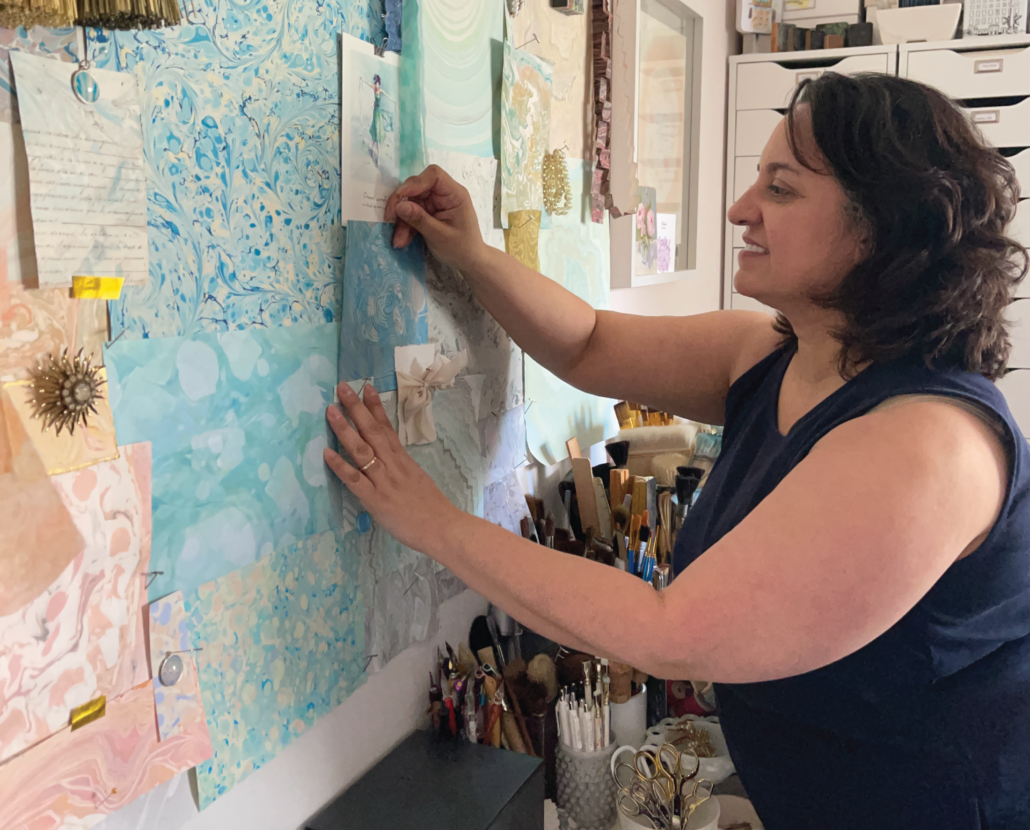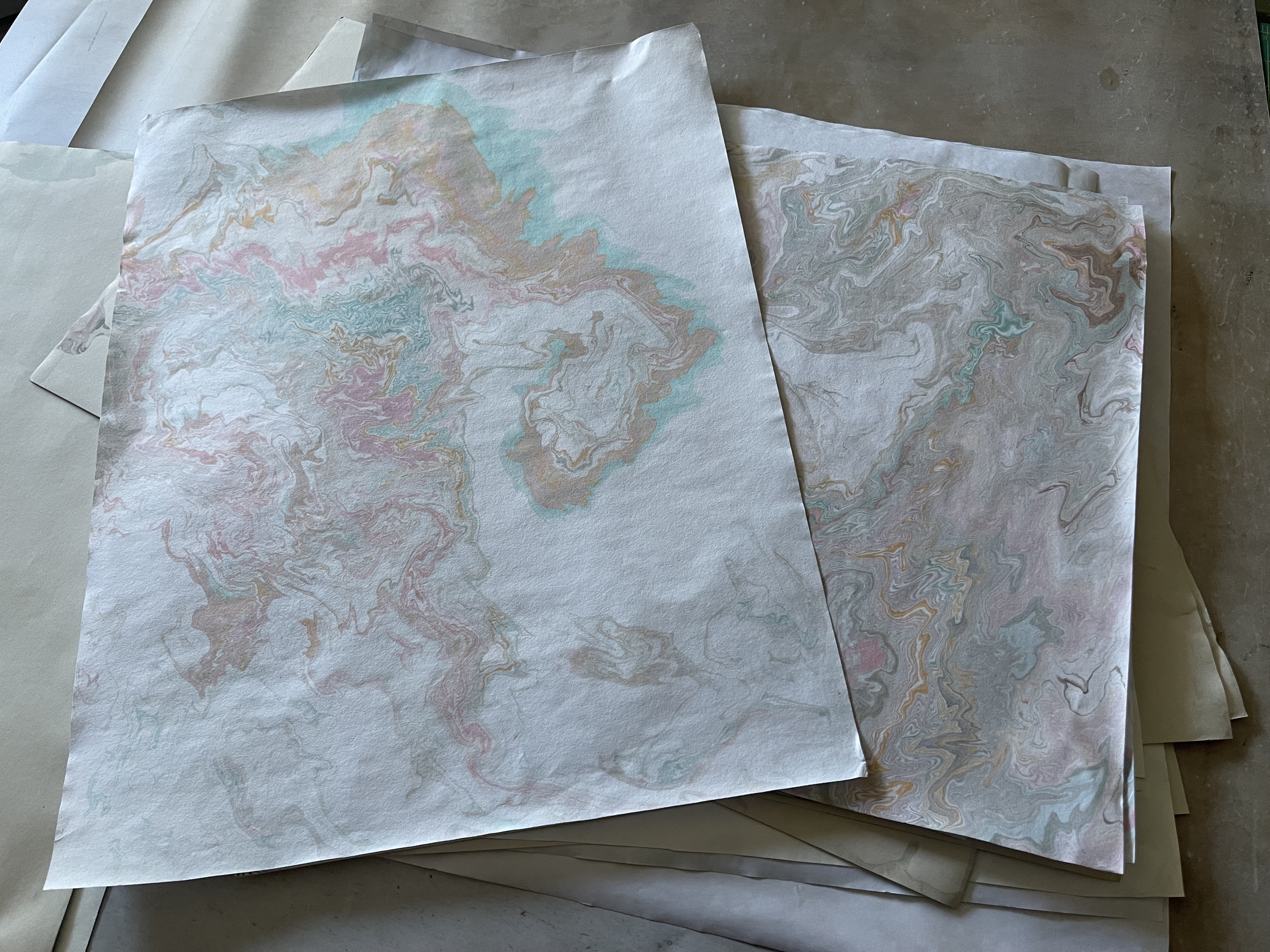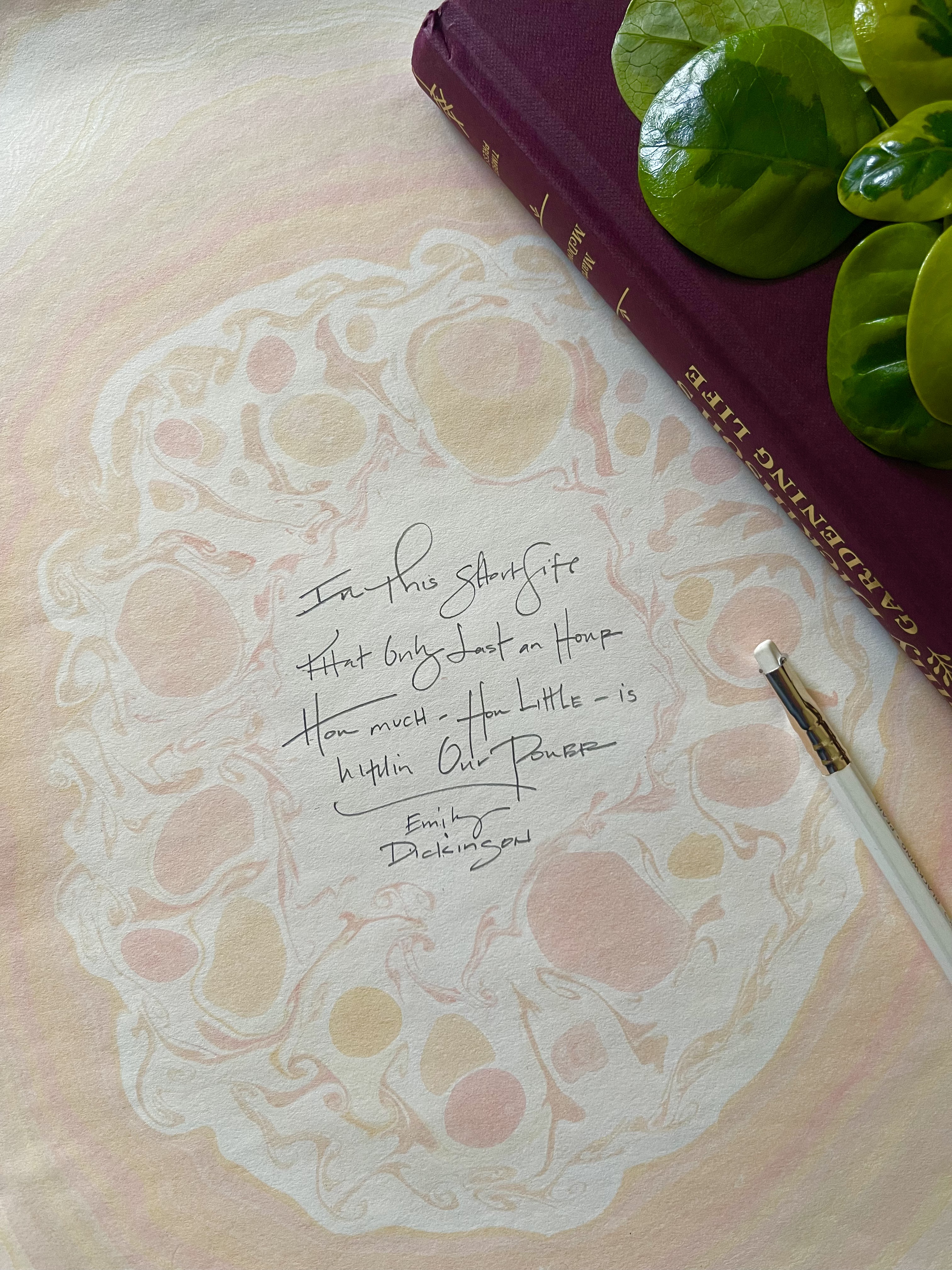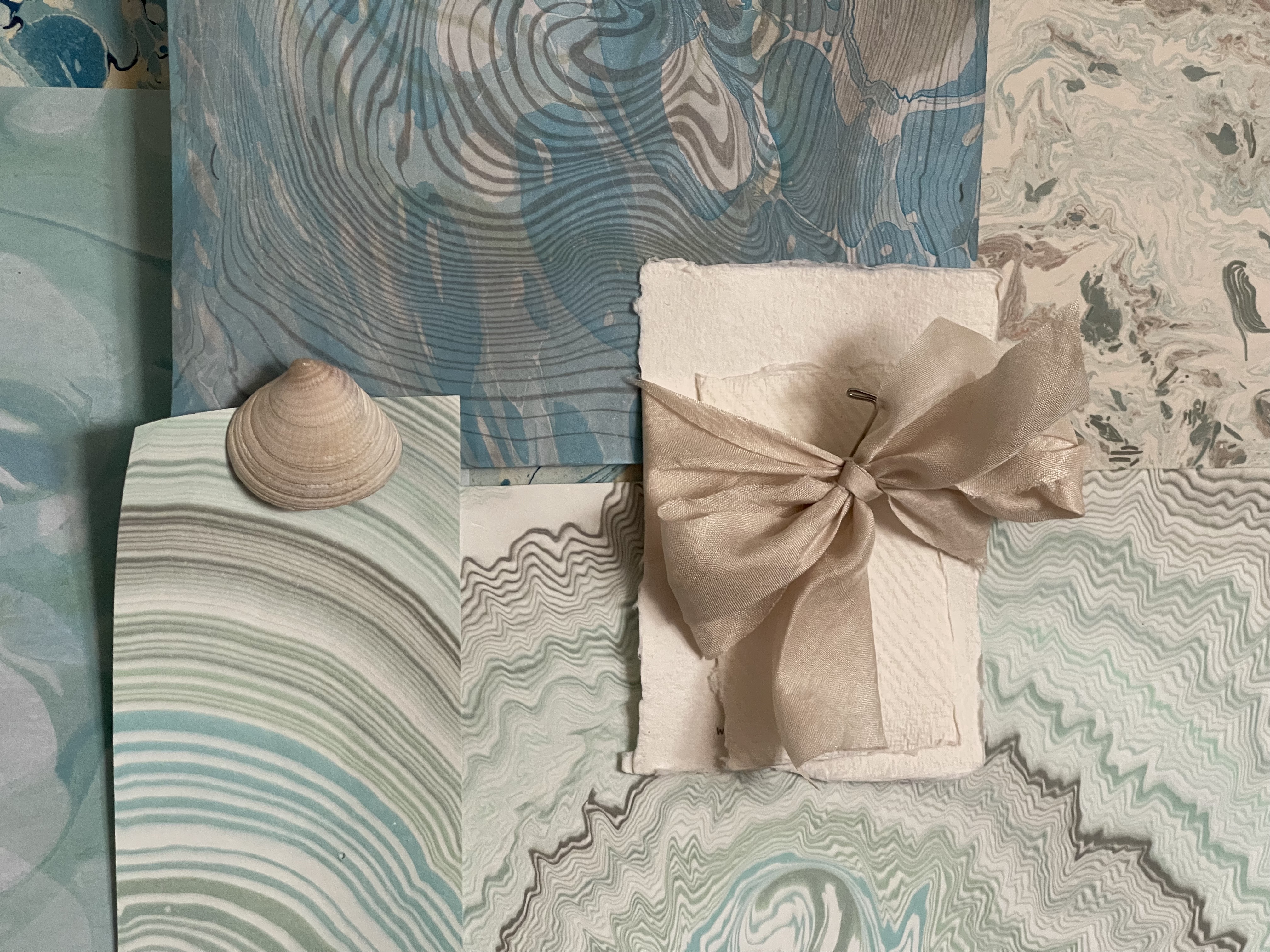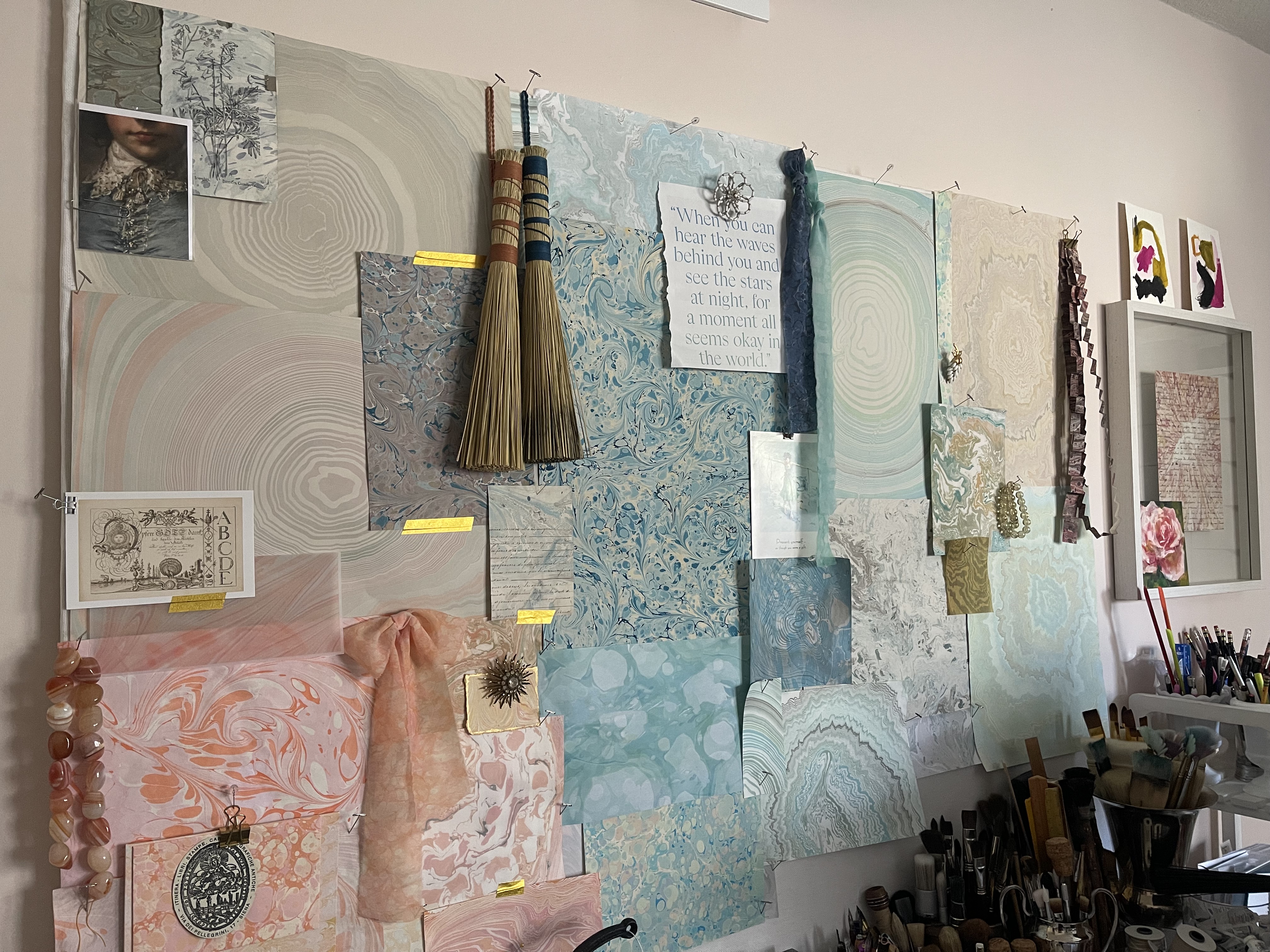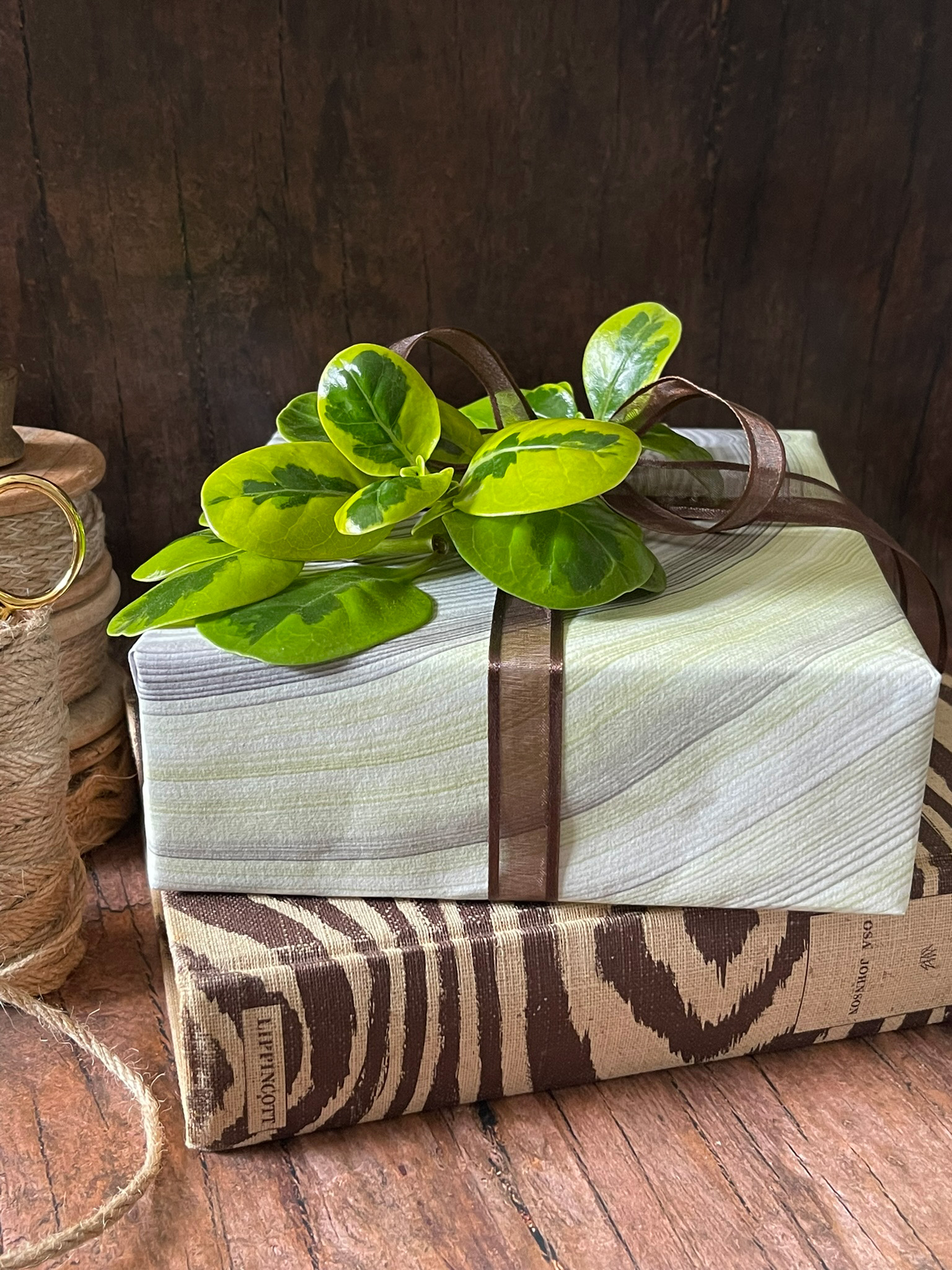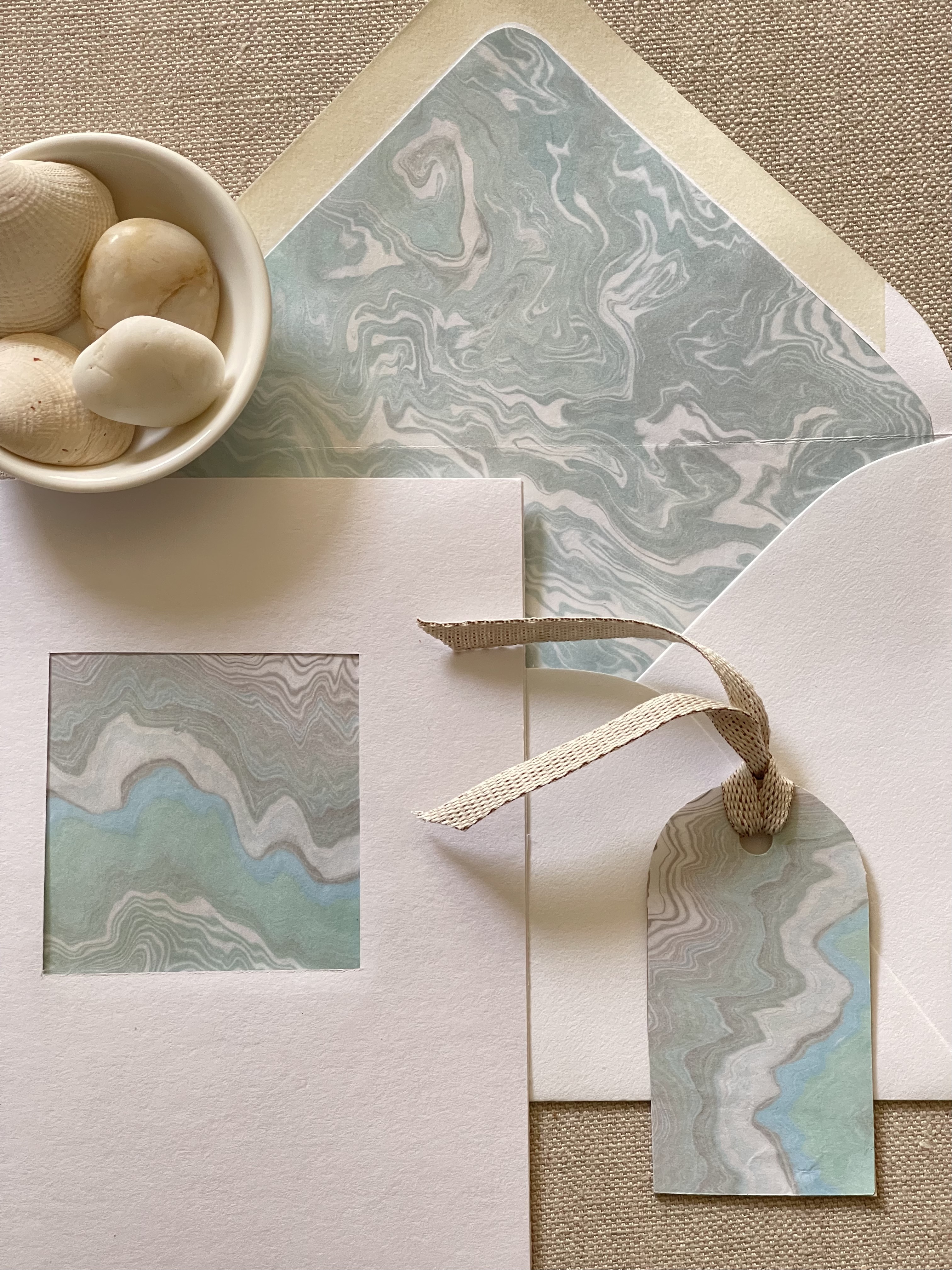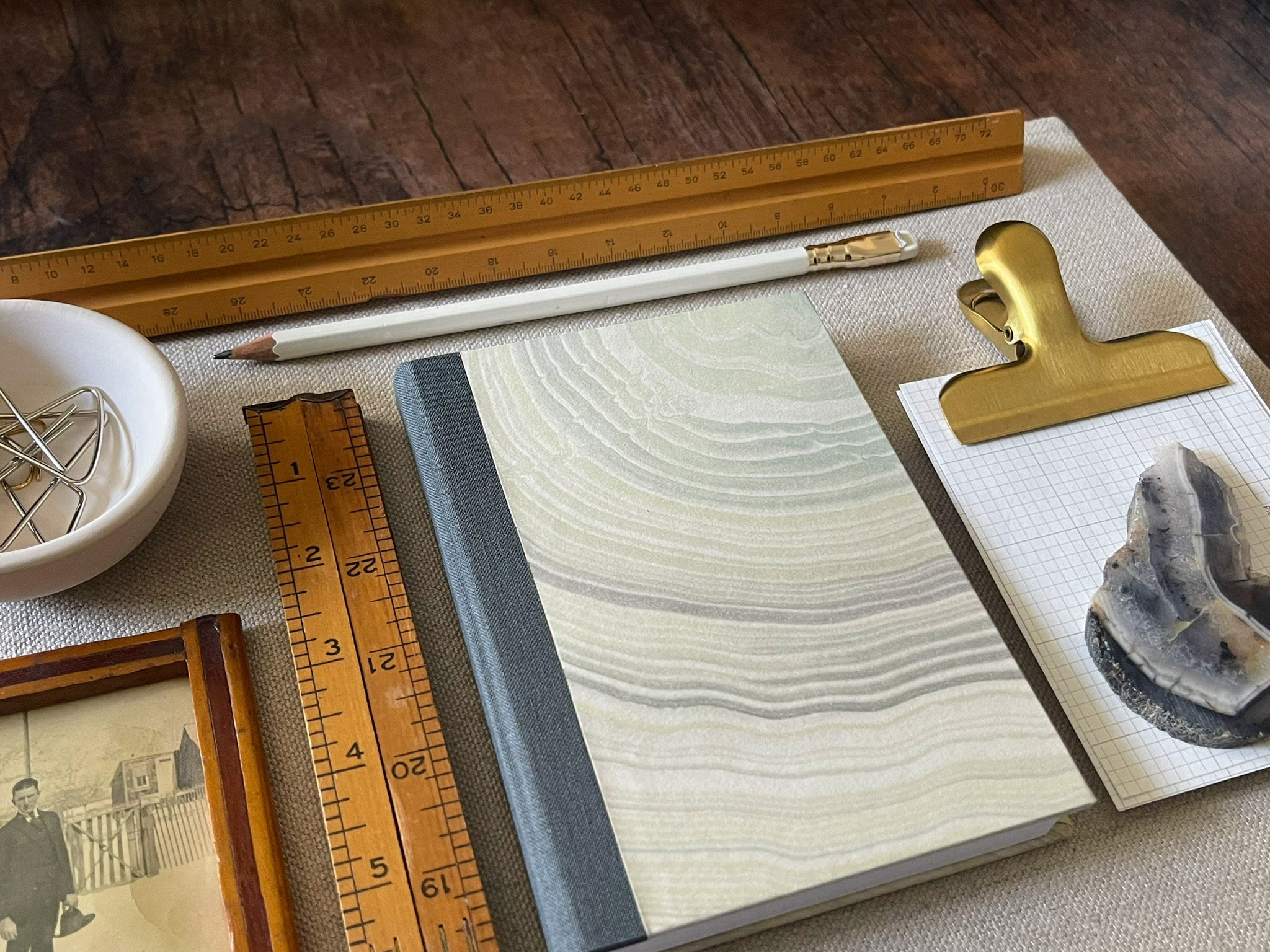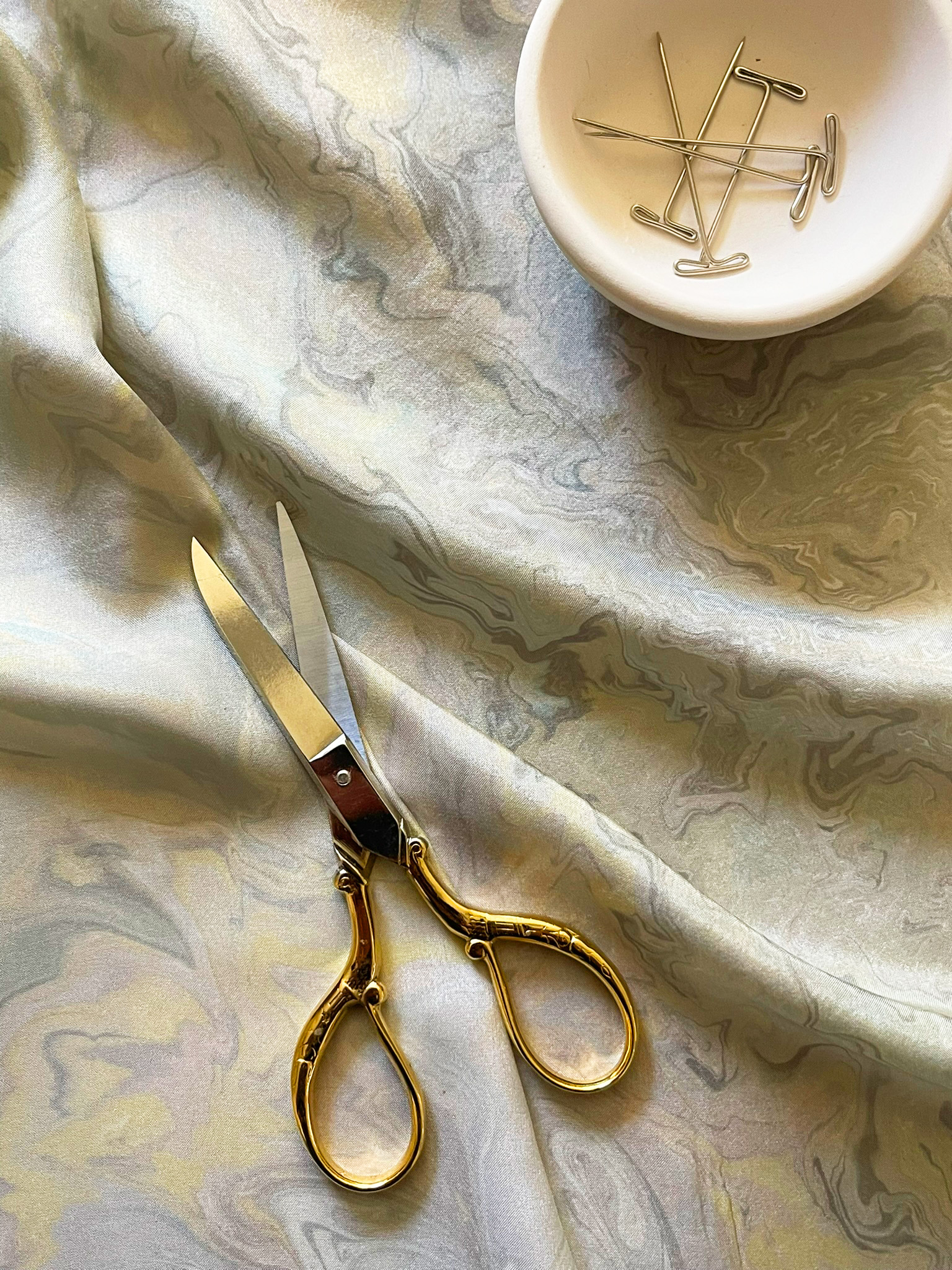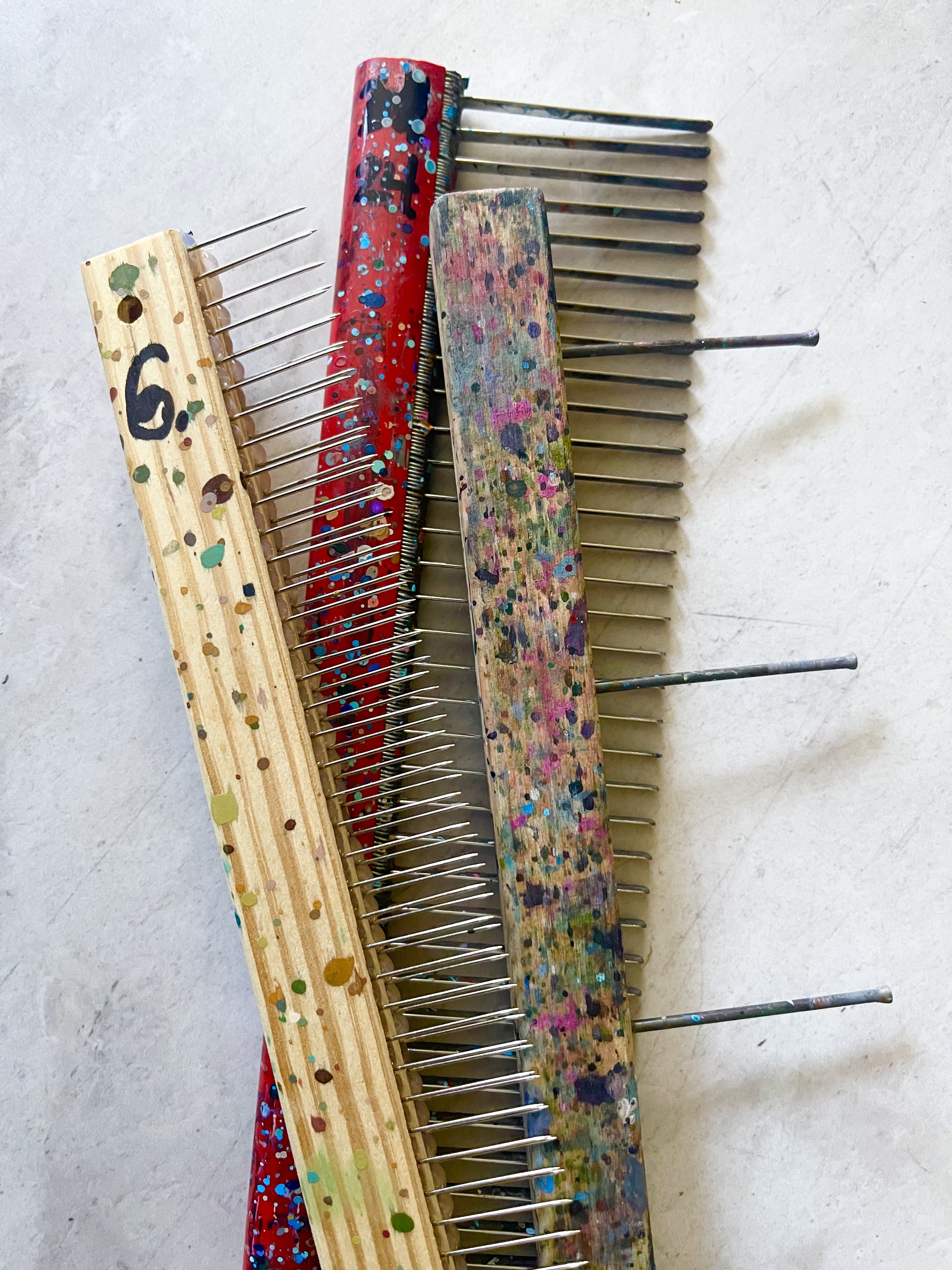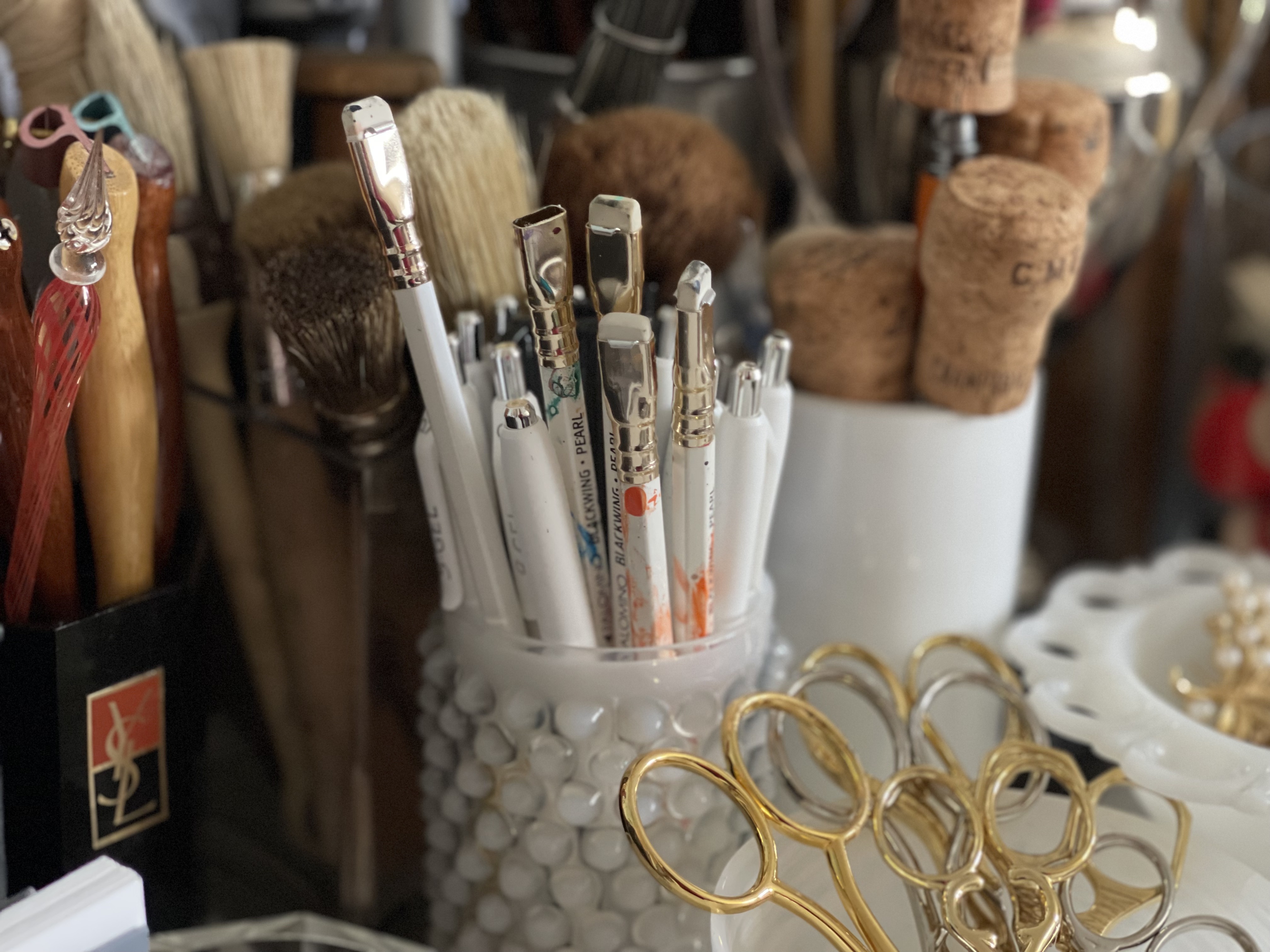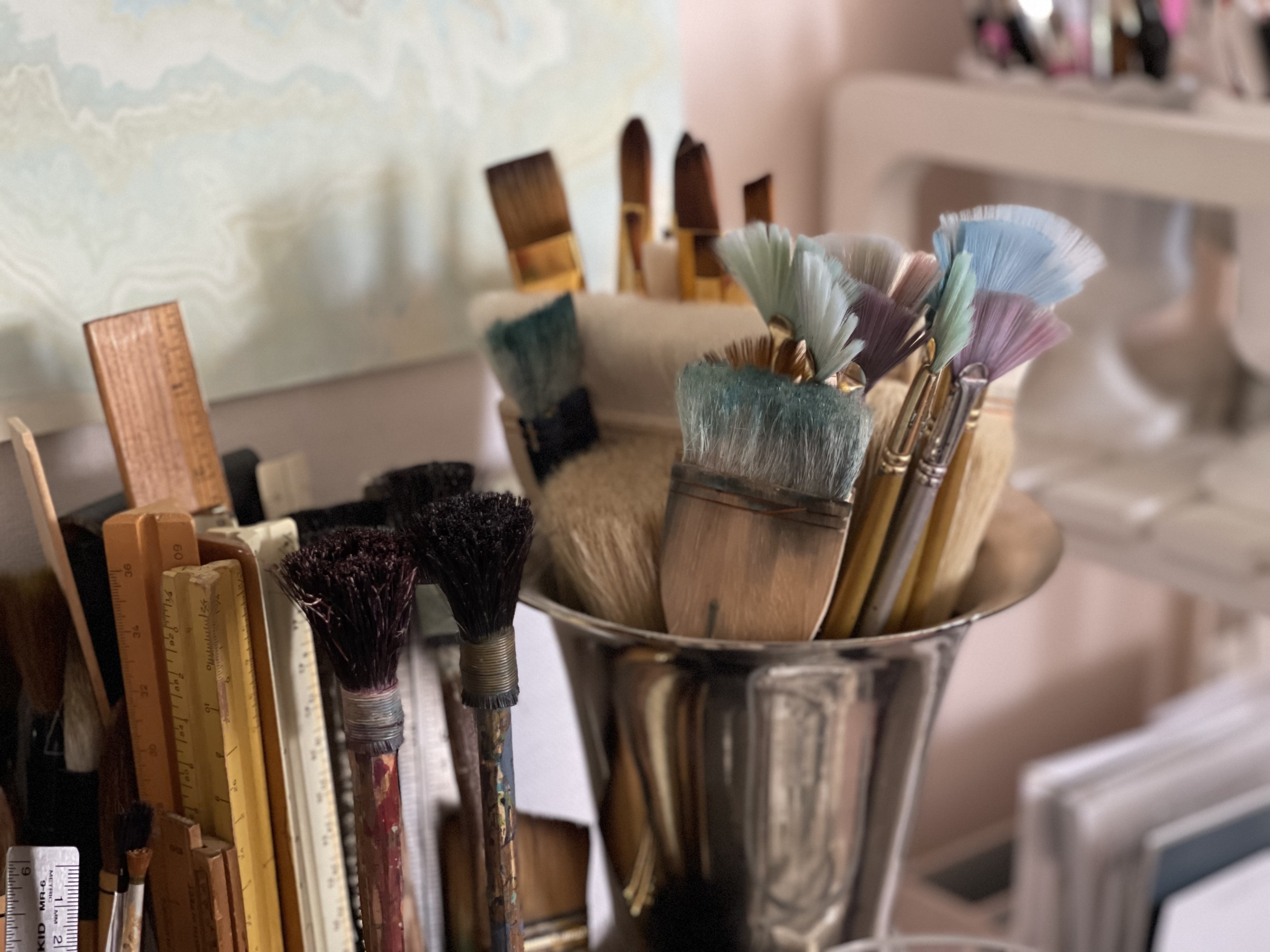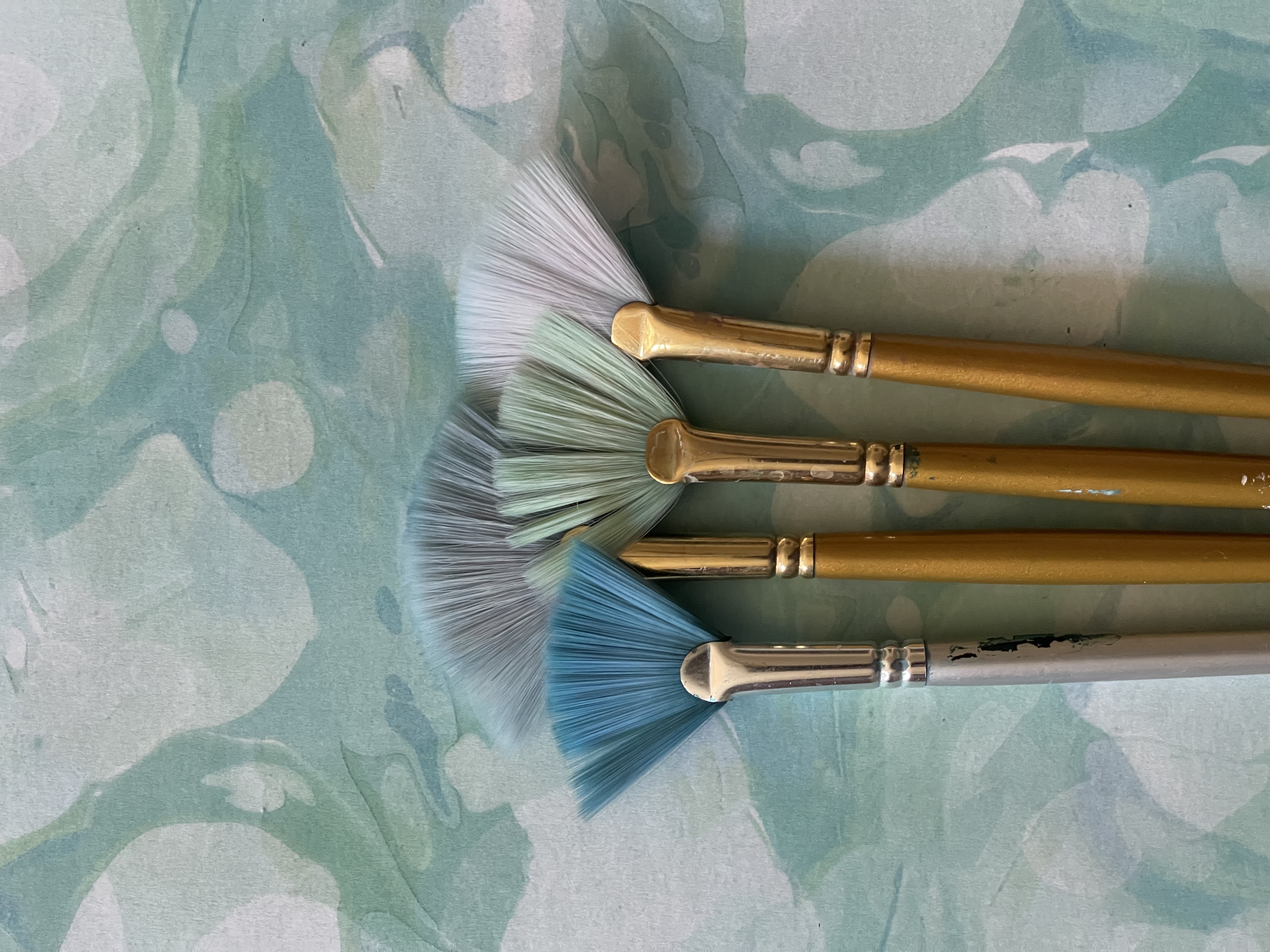Name: Vanessa Reynoso
Brand: Marbled Paper Studio
Craft: Paper Marbling
Location: California
“You have to surrender yourself to the elements and embrace the unpredictability because it is all part of the process.”
THE PROCESS
We had the pleasure of chatting with Vanessa Reynoso of Marbled Paper Studio. She shares about the intricate craft of paper marbling, its history dating back to the 12th century & much more.
What is paper marbling?
I get this question a lot! It is a form of decorative paper design. The process is a delicate balance of floating paint on thickened water. Paint is built up in layers and can be manipulated into intricate and precise patterns with various tools. Once a pattern is created you carefully lay down a piece of paper on the surface of the water to capture the image. The result is a one-of-a-kind work of art. If you need multiple sheets of one design, you can create designs that are consistent in terms of color and pattern but they will never be identical.
What inspired you to pursue marbling?
My husband and I love to travel and I was captivated by the marbled patterns we saw in museums and paper shops throughout our trips to Italy. I am a traditionalist at heart and have an affinity for beautiful stationery products. I began to experiment with the process enabling me to recreate marbled patterns on my own in more contemporary color palettes.
Can you tell us a little about the history of paper marbling?
Marbling has a very rich history. The earliest form of marbling was seen in Japan during the 12th century in a style known as “Suminagashi”, which translates to “floating ink”. These patterns are generally characterized by a series of concentric rings. They often served as an ornamental background for poems and other calligraphic arts for nobility. In the 15th century, we began to see Turkish and Persian forms of marbling known as “Ebru”, which means “cloud painting”. This highly decorative form of marbling typically incorporated illustrative patterns such as flowers. In the 16th century, we began to see paper marbling make its way into Europe through the import trade. This beautiful marbled paper eventually caught the eye of bookbinders who used marbled designs to create highly decorative books. Then, in the 17th century, marbling arrived in the United States when European settlers brought the technique with them.
Examples of Vanessa’s marbled paper creations
What is marbled paper used for?
Most people are familiar with marbled paper through its use in the book arts, where marbled designs have graced book covers and end pages for centuries. However, marbled paper is ideal for various paper goods such as gift wrap, gift tags, greeting cards, bookmarks, and place cards. It is also well suited for home decor projects such as lining drawers, shelves, or the backs of bookcases. Marbled paper looks great as a mat to frame artwork or as standalone wall art, allowing the colors and patterns to be put on display.
What is the Suminagashi technique?
Suminagashi is the simplest form of marbling. Unlike traditional forms of marbling, Suminagashi uses ink instead of paint, and plain water as opposed to thickened water. Designs are typically characterized by a series of organic concentric rings, similar to the growth rings found on trees.
Suminagashi is a journey of creativity and mindfulness. My approach to Suminagashi is very much a meditative practice with a real connection with the surrounding environment. Earth, air, fire, and water are considered building blocks of our universe and I love combining these elements into my Suminagashi practice to create a real sensory experience. I will often place a lit candle into the water to represent fire and clippings from the garden to represent earth. I have not seen anyone else incorporate earth and fire into their practice so it is quite unique to my studio. I also love introducing gusts of air to the surface of the water and when the weather is nice, which is quite often in California, I’ll often create outdoors. With Suminagashi, you have very little artistic control on the final pattern and even the most subtle shifts in water will influence the design. I like to think of it as “nature’s fingerprint”. You have to surrender yourself to the elements and embrace the unpredictability because it is all part of the process.
Can you talk about some of the tools you use?
A few of the basic marbling tools in my studio include marbling trays in various sizes and a wide assortment of simple combs, rakes, and other “tools” to create various patterns. Marbling is such a niche art form that there aren’t any modern-day manufacturers producing tools at a large scale for the professional marbler. Many of the tools used by marblers today, including myself, are handmade while other items are repurposed. For example, it is not uncommon for me to use skewers, knitting needles, bundled broom-straw, or even toothbrushes to create various effects. Most of my rakes and combs are made from wood with either nails or pins secured in place to create specific designs. Although marbling has been around for centuries, I feel like some of my tools are just as primitive as those used by my marbling predecessors.
Key to the marbling process is a thickened water that fills the marbling tray. The water is thickened with carrageenan, a powder derived from seaweed. This provides a stable surface for paints to float and be manipulated into various patterns. I use acrylic and gouache paints although I would love to start making my own paint in the future.
Vanessa’s various paper marbling tools
What advice would you give to someone interested in the craft?
Marbling is a magical art form, but most people don’t realize that the preparation is time-consuming and the process can be quite finicky. For someone wanting to learn the art of marbling, my advice would be to embrace the unpredictable and learn to love the process just as much as the end result. Be patient. Recognize that you will not always be in control of the process and sometimes you have to be willing to adapt your water, paints, and your environment to make things work. At times you may even need to step away from the marbling tray for a bit. As long as you recognize and accept this, your experience will be much more enjoyable and rewarding.
Can you tell us about any of your upcoming projects?
I’m excited to be working on a collection of printed papers taken from my original hand-marbled designs. My printed papers will offer a great alternative for those wanting the beauty of marbling in a more accessible format since papers will be ready for immediate shipping. This is particularly convenient for someone who needs multiple sheets of the same design quickly or has a project that doesn’t necessarily require an original design.
I’m also developing a collection of marbled ribbon. I love a beautifully wrapped gift and cherish the fond memories of wrapping gifts with my mother during Christmas time. We would pick a day to tackle wrapping all of the gifts in one sitting. It was wonderful! The new ribbon collection is a direct result of my love for the art of gift wrapping and a nod to the wonderful memories I shared with my mother. I really enjoy presenting gifts in a thoughtful way and the new ribbon collection provides a wonderful embellishment for those wanting to create their own beautifully wrapped gifts or use in other creative ways.

